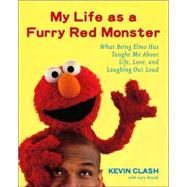
KEVIN CLASH has been with Sesame Street for twenty-six years and is Co-Executive Producer of Elmo’s World. He has won two Emmy Awards for Outstanding Performer in a Children's Series, and five for his work as Co-Executive Producer for Outstanding Pre-School Children's Series. He lives in New York City.
| Welcome to "Elmo's World"-and My World, Too | p. 1 |
| Love | p. 7 |
| Joy | p. 37 |
| Creativity | p. 61 |
| Tolerance | p. 89 |
| Courage | p. 109 |
| Friendship | p. 129 |
| Cooperation | p. 149 |
| Learning | p. 171 |
| Optimism | p. 191 |
| Acknowledgments | p. 209 |
| Table of Contents provided by Ingram. All Rights Reserved. |
The New copy of this book will include any supplemental materials advertised. Please check the title of the book to determine if it should include any access cards, study guides, lab manuals, CDs, etc.
The Used, Rental and eBook copies of this book are not guaranteed to include any supplemental materials. Typically, only the book itself is included. This is true even if the title states it includes any access cards, study guides, lab manuals, CDs, etc.
Excerpted from My Life as a Furry Red Monster: What Being Elmo Has Taught Me about Life, Love and Laughing Out Loud by Kevin Clash, Gary Brozek
All rights reserved by the original copyright owners. Excerpts are provided for display purposes only and may not be reproduced, reprinted or distributed without the written permission of the publisher.